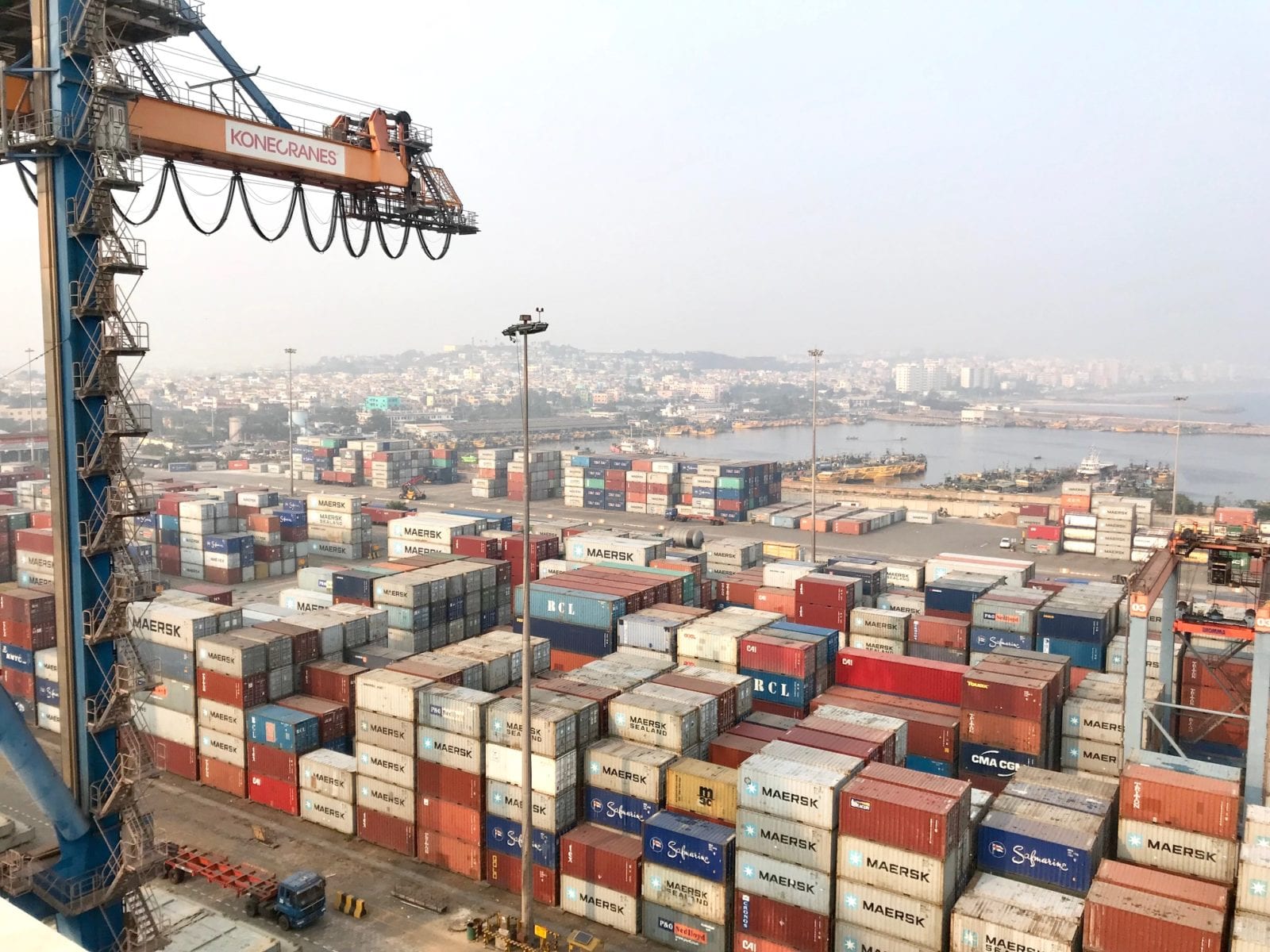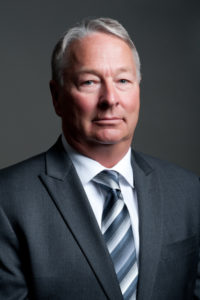A Master of Logistics, Bo DeLong Offers Business Insights and Perspective on What It Takes to Meet Demand
- Category:
- General News

As a leader in container exports, reports of being in the midst of a “commodity super cycle” are not new to Bo DeLong, vice president of Grain for The DeLong Co. Inc. When asked by Jim Sutter, U.S. Soybean Export Council CEO, about the current market, DeLong said, “There is a great deal of demand, that has been led by China in the past six months. It reminds me back in late 2006-2008 when we had commodity prices in general really blow up. What separates this is that it’s demand-driven.”
Sutter said that is a key point.
“This is a demand-driven cycle, so whether it’s a “super cycle” or not, I think people need to take note that demand is behind it.”
Current demand has also driven the price of soybeans up. DeLong said that most of the countries they serve understand the demand-driven environment, especially now that China is back in the market.
“Our customers, when prices go up, might hesitate for a few weeks, but they ultimately accept these higher prices,” said DeLong. “We don’t see much resistance ... over the short term we might, but over the long term, we don’t.
“Our farmers are very happy right now, whether they are grain or soybean farmers, they are pleased.”
Soybeans are a big part of business for the DeLong Company. DeLong estimates that soybeans make up 65-70% of the company’s total volume, crowning soy the primary crop.
“Sometimes high prices cause demand to shift a little, and we might see some demand go over to other protein sources,” he said, adding that he still expects demand for soybeans to be quite strong. “I think the market is telling us that also.”
The International Market
For the past 15 years, The DeLong Co., Inc. has exported soy to more than 20 countries around the world, primarily in Southeast Asia, Taiwan and China.
“As long as China remains open, I think that region will continue to be a big growth area for us. It’s just an enormous market,” remarked DeLong, adding that with China’s wide range of industries, there’s a market for No. 1 beans, No. 2 beans for crushing, non-GMO beans and high protein beans.
“As far as new markets, being in the container business, we’ve had the tendency to look at markets that offer something a little different than a straight No. 2 soybean,” he said. “We’re always looking, and we’ve had very good growth in looking for soybeans that possess different characteristics. That’s one avenue for our growth.
“Another avenue for our growth is in becoming more and more efficient in what we do so we can compete against, in some areas, the bulk vessels. That’s been a big area of growth for the past 15 years, and it will continue to be an area of growth for us.”
In terms of sustainability as a marketable advantage of U.S. Soy, DeLong said, “We have a European customer, with a plant in Mexico that we supply ... Then, we also use USSEC’s program, the U.S. Soy Sustainability Protocol or SSAP, when we go to Japan.”
Logistics
To maintain the company’s status as a leader in container exports, DeLong says their strategy involves finding locations near container yards, going to locations that provide an ample supply of containers with a consistent track record and drawing from a number of steamship lines to support their business.
With freight costs on the rise, The DeLong Co. has been working toward logistics that will evolve to support U.S. agriculture exports. This logistical strategy includes:
In light of current container availability, DeLong’s recommendation to other importers and buyers is to turn containers around as quickly as possible.
According to DeLong, in the previous few years when there was a surplus of containers, steamship lines had been very lenient in their terms, allowing buyers two to three weeks to unload. While there are certainly other factors at play, this practice isn’t feasible in the current market, he said.
Despite the tightened container availability, DeLong boasted the first four months of the crop-year as four of the best he’s seen in his company in the past 10 years. It wasn’t until mid-December that issues began to rise.
“The whole system was becoming congested,” said DeLong. “It isn’t just a steamship issue — it’s a port issue, it’s a railroad issue … when you have so much pent-up demand like we had in this country, it caused the import flow to be huge — more than we’ve seen in three or four years — and it overwhelmed the system.
“Because of that, we’ve seen congestion at major ports, railroads not being able to perform because the ports are congested, we’ve seen ocean vessels at anchor at some of the major ports for 25-30 days … So, there’s a lot of things that have caused problems, but in general, it has been [because of] the overwhelming demand that we’ve seen in the last six months.”
In response to Sutter asking DeLong whether he believes that the U.S. will be able to continue being a reliable supplier to buyers around the world, DeLong was optimistic.
“Even in the past week, we’re starting to see customers come back, we’re able take more orders than we were a couple weeks ago, we’ve seen new things come down. In fact, our sales team told me this morning that container loadings out of the U.S. and grain inspections out of the U.S. were a little better than the week before and the previous week.”
Having seen situations like this a handful of times over the past 15 years, DeLong is confident that things always seem to work themselves back into line; it’s only a matter of time.
Efficiency
“When we’re trying to sell No. 2 soybeans, or what I’d call crushing soybeans, against bulk vessels, we have to be so competitive,” said DeLong. To do this, The DeLong Co. leaves no stone unturned.
“Our organization looks at things that can save us five dollars a container — it’s that competitive. We talk about container rates going up — all we care about is that spread between container and bulk. We have to maintain that spread to be competitive. That’s why we are based solely on efficiencies. What’s our cost per box? ... Every cost goes into this model and we try very hard to be the most competitive and the most efficient operation in loading containers.”
Finally, when asked what the key is to remaining relevant since the 1980s and becoming such a large shipper of containers exporting from the U.S, DeLong was quick to answer.
“Good people,” he said. “Good people. People who care about what they are doing and people who really enjoy what they are doing. We’re very fortunate to have great employees. And we’re very fortunate to have a group of famers that supply us, whether in Ohio, New York, Kansas, the Chicago area or Nebraska, we have a great group of producers. Those, I think, are the big things.”

In the early 1980s, Bo DeLong began originating and selling specialty grains to food processors and by the latter part of the decade, he had expanded to selling containers of “tofu type” soybeans to Japan. When the time came in 2004 and the economics made sense to expand commercial grain and feedstuff shipments for export using containers, the company was well-positioned to take advantage of the market opportunity. Bo has helped grow the company from exporting primarily to Japan to now serving customers in more than 20 different markets.
Thanks to his fortitude and work, The DeLong Co. is a leader in exports of commodity and food grade soy. As vice president of DeLong’s Grain division Bo has overseen the acquisition of country elevators and the building of trans-load facilities to expand commercial operations. Today, he’s responsible for the company’s 14 grain elevators and its export program.